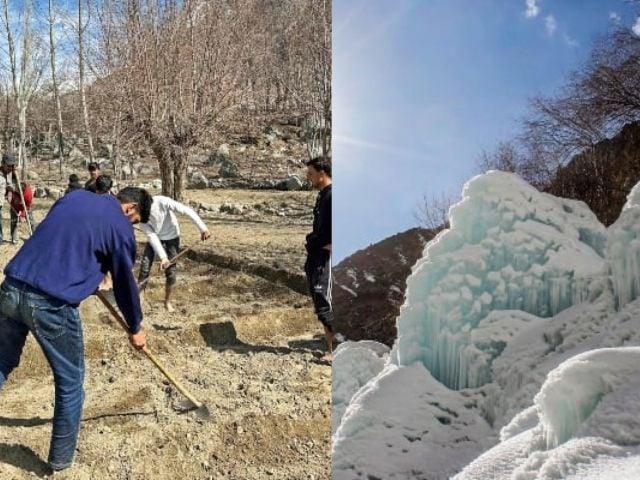In the Givrères Valleys of Gilgit-Baltistan, Pakistani farmers fight water shortage by building artificial glaciers in the shape of imposing ice cones.
These “ice stupas” are handmade in winter by spraying water in freezing air, where it turns into ice and accumulates in massive structures that are slowly melting in spring – offering irrigation when natural ice mel has not yet started.
YouTube tutorial turns into a survival tool
The idea was not born locally. He came to the other side of the border in Ladakh, India, where the Sonam Wangchuk environmentalist developed the concept almost a decade ago.
“We have discovered artificial glaciers on YouTube,” said Ghulam Haider Hashmi, a farmer from Hussainabad. “We studied the online process and built our first.”
Despite tensions between the two countries, knowledge has traveled digital borders and found impatient adopters in Gilgit Baltistan.
Science behind stupas
Zakir Hussain Zakir, professor at the University of Baltistan, explained how it works.
“The water must be powered upwards so that it freezes in the air when the temperature is less than zero,” he said.
The result is an ice formation in the shape of a cone resembling a Buddhist stupa. These towers gradually melted in the spring, imitating natural glacial cast iron and supporting early plantations.
A new agricultural rhythm
Muhammad Raza, a farmer from Hussainabad, said eight ice stupas had been built this winter, storing nearly 20 million liters of water.
“Before, we had to wait until June for the glaciers to melt. Now we can start planting much earlier,” he said.


Bashir Ahmed, a 26 -year -old farmer in the neighboring Village of Pari, added that improving the water supply had led to several harvests.
“We used to have a growth season. Now we can grow wheat, barley and potatoes up to three times a year,” he said.
A growing movement in the mountains
More than 20 villages in Gilgit-Baltistan have adopted the technique since the construction of the first stupas in 2018.
According to Rashid-Ud-Din, head of the Glol-2 program under the initiative of climate adaptation UNE-PAKISTAN, more than 16,000 people now benefit from ice irrigation.

The method avoids the need for expensive infrastructure such as tanks or water tanks and corresponds well to local topography and climate.
The climate impact strikes stronger in the North
The regions of northern Pakistan are on the front line of climate change. Temperatures in the country have increased twice as fast as the world average, and snowfall decreases in places that formerly depended.
“From the end of October to the beginning of April, we received strong snowfall,” said Sher Muhammad, glacial expert in Icimod. “Now the winters are much drier.”
Most of the region’s water traditionally comes from spring snow melting, not from the glacial cast, which makes winter precipitation vital.
Local innovation, global relevance
With limited resources, Gilgit-Baltistan residents have found an environmentally friendly and profitable means of adapting.
“Faced with climate change, there is neither rich nor poor – everyone is vulnerable,” said Yasir Parvi, 24. “In our village, we tried our luck with ice stupas. And it worked. “




